FARMING THE SKAGIT VALLEY
Documenting Farmers, Their Work & the Land They Till
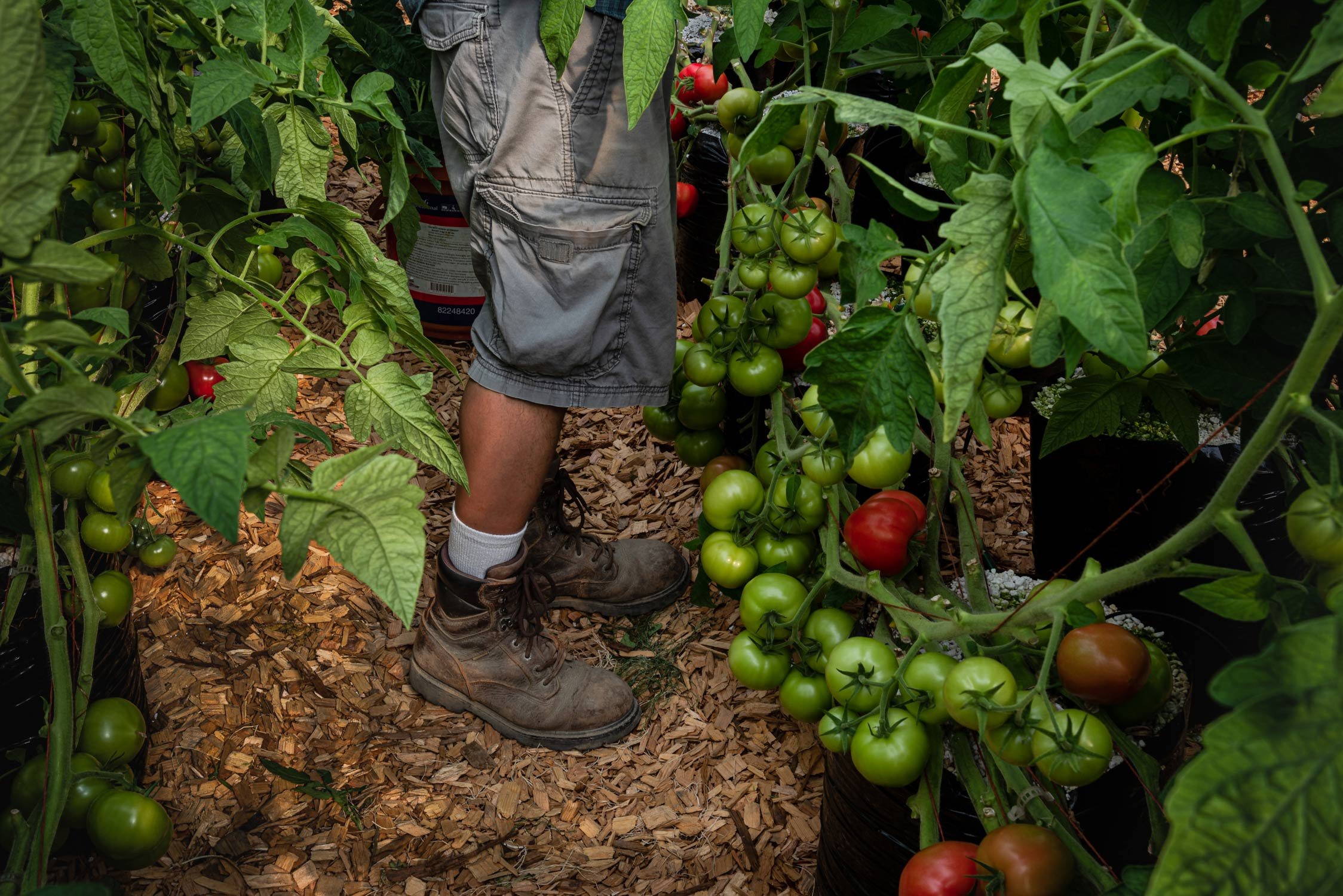
Feeding, watering, pruning, harvesting hot house tomatoes require a lot of attention. Every ounce of work is paid off in each organic tomato that comes out of this greenhouse.
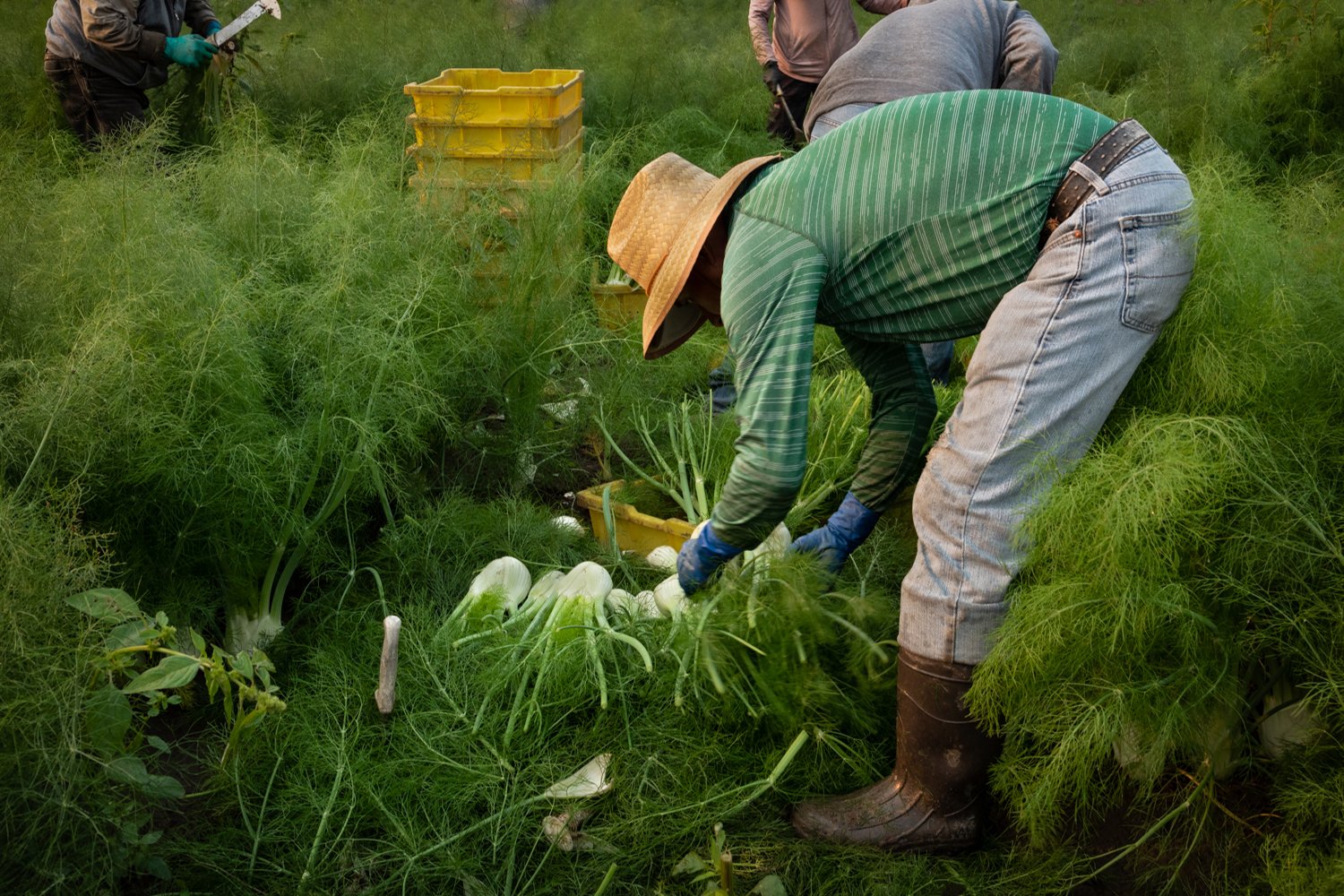
There are over 90 crops grown in the Valley ranging from fennel, to beets, onions, apples, green peas, vegetable seed, potatoes, corn, Brussels sprouts, the list goes on. Agriculture rules this valley.
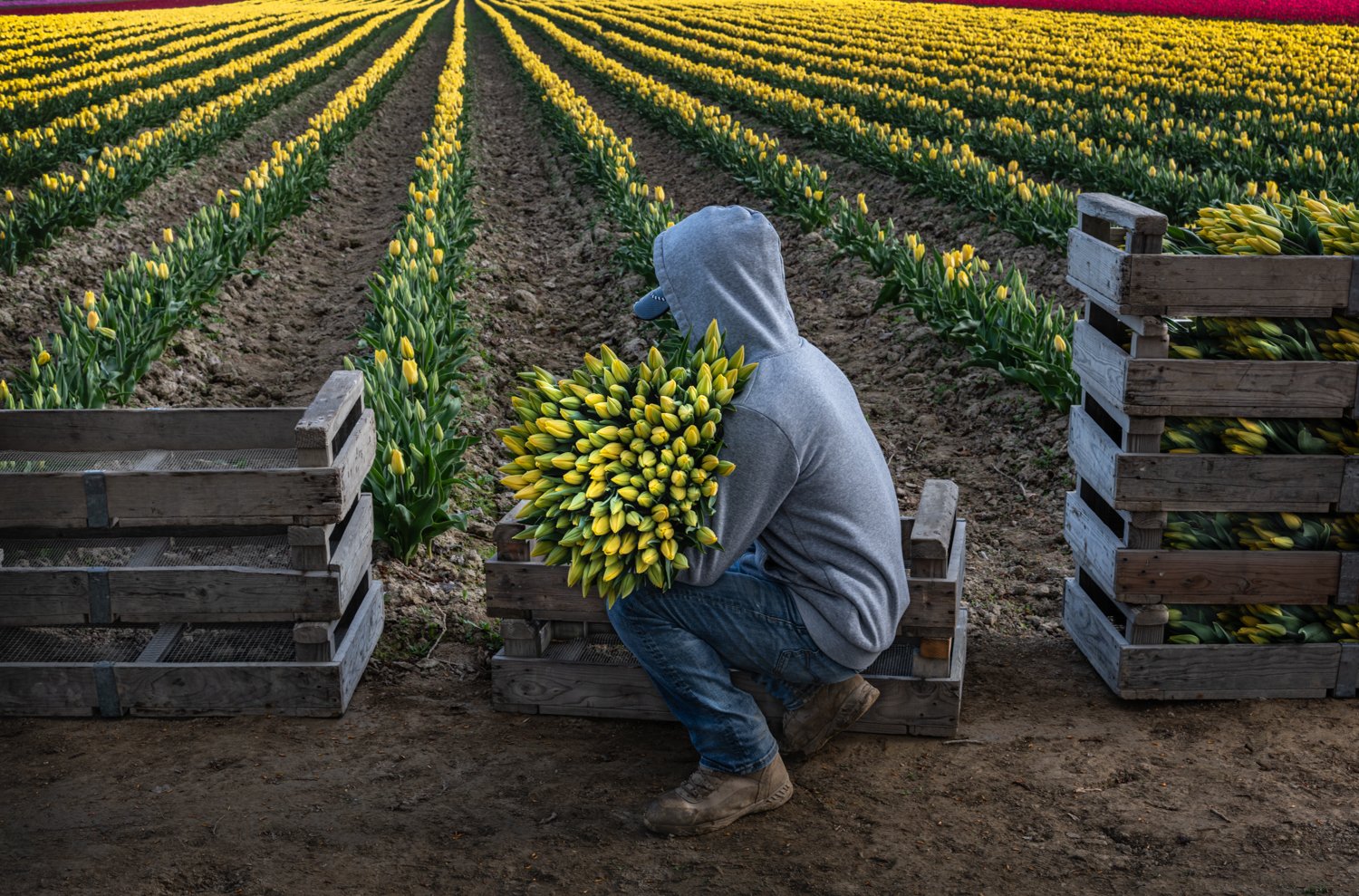
Tulips are one of the many crops grown in the Valley. 75% of all the commercial tulips grown in the U.S. are grown here.
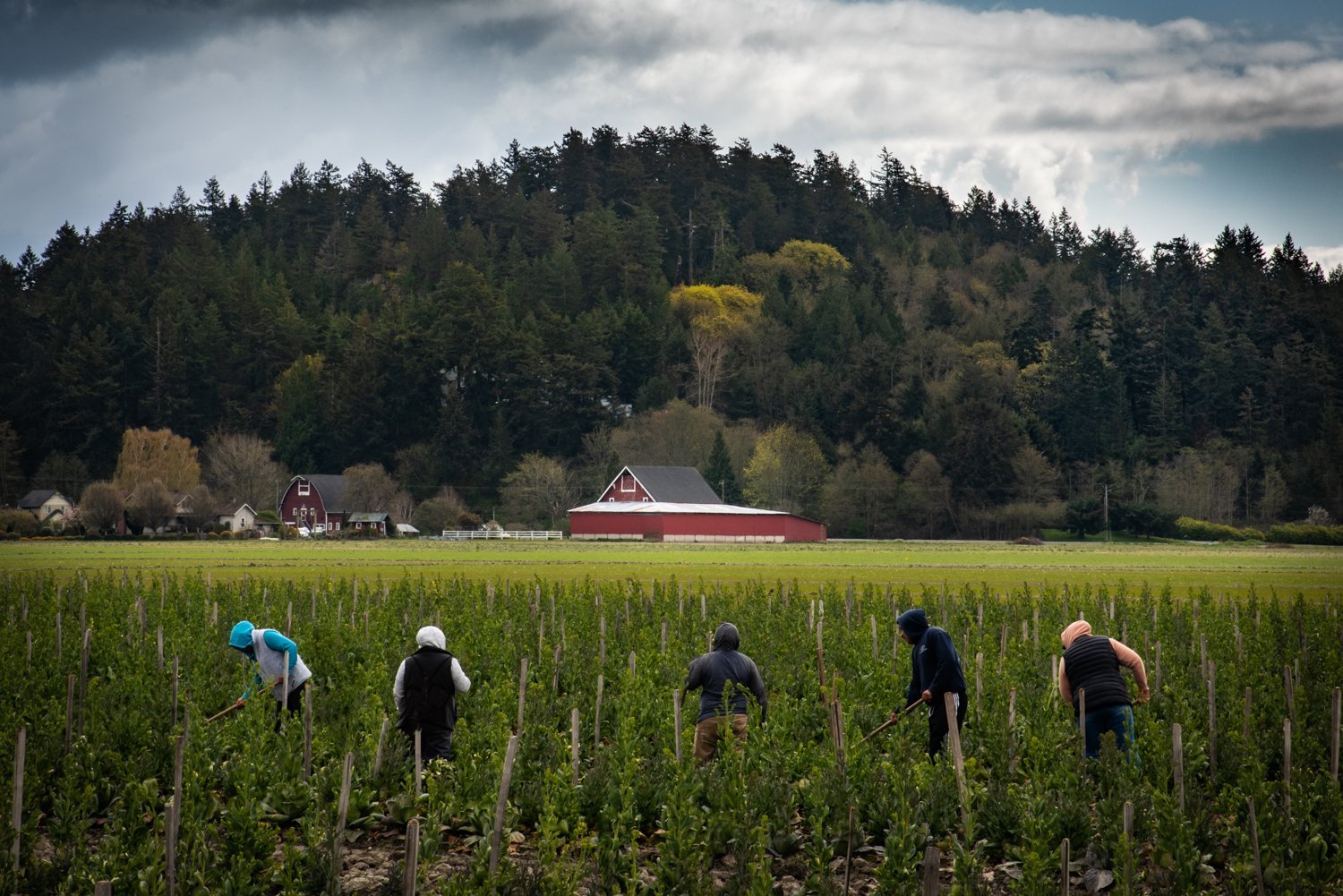
Seeds are an important crop in this county, farmers produce 25% of the world’s cabbage seed, 75% of the U.S. spinach seed and 50% of the Global beet seed, among others.

Asparagus is a Spring Crop that needs daily harvesting. The workers cut one spear at a time, handling each with care; asparagus is an incredibly fragile plant. Harvesting takes place from April – June: 7 days each week. The spears grow incredibly fast, demanding daily attention.

Three machines: the left one harvests bulbs and transfers them to the middle machine which sorts dirt clods from tulip bulbs. From there bulbs are transferred to the truck on the right which hauls the bulbs back to the barn to be sorted and shipped all over the country. Bringing up the rear, four workers with buckets pick up bulbs as they spill from the machine to the ground. Given the price of bulbs nothing is left behind. With all that dust everyone is wearing a mask.

Plastic wrap allows hay to be cut sooner and immediately baled. Wrapped hay ferments like silage. Baleage is higher in protein and more palatable for the cows than dry hay.
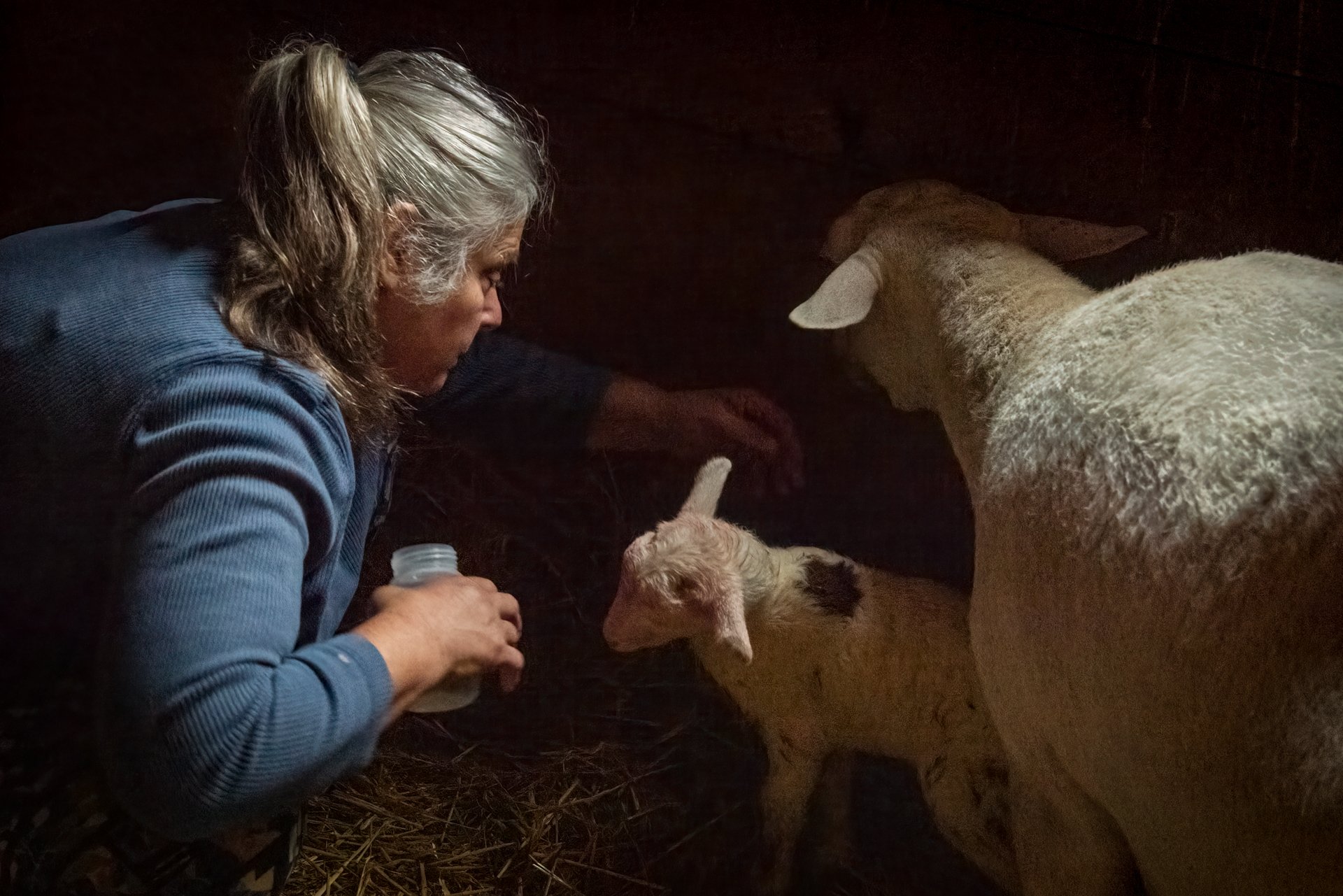
From their first moments, Anita treats her animals with love and respect. Her care for the animals is gentle.
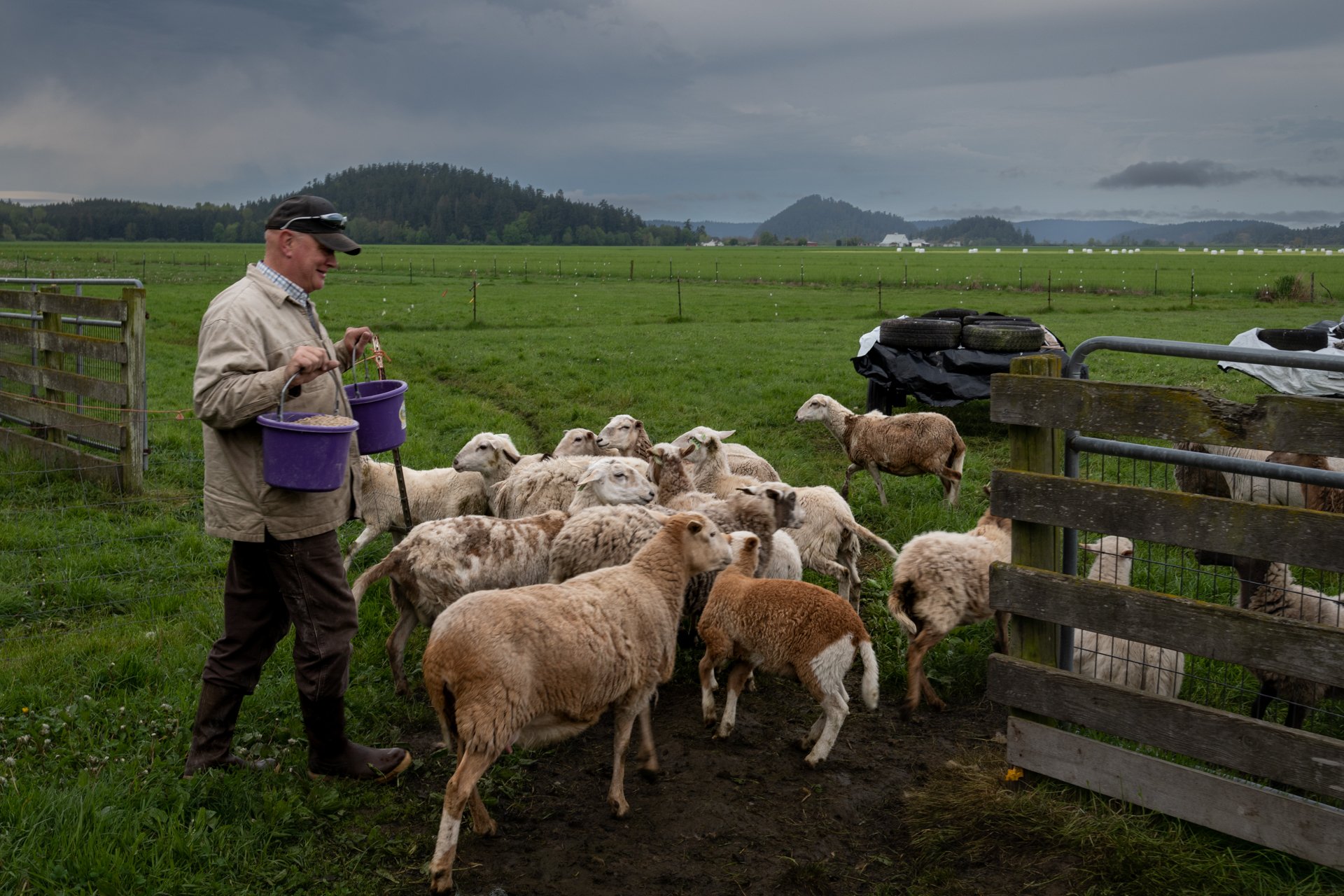
The sheep may enjoy good pasture, yet they are always excited by early morning grain.
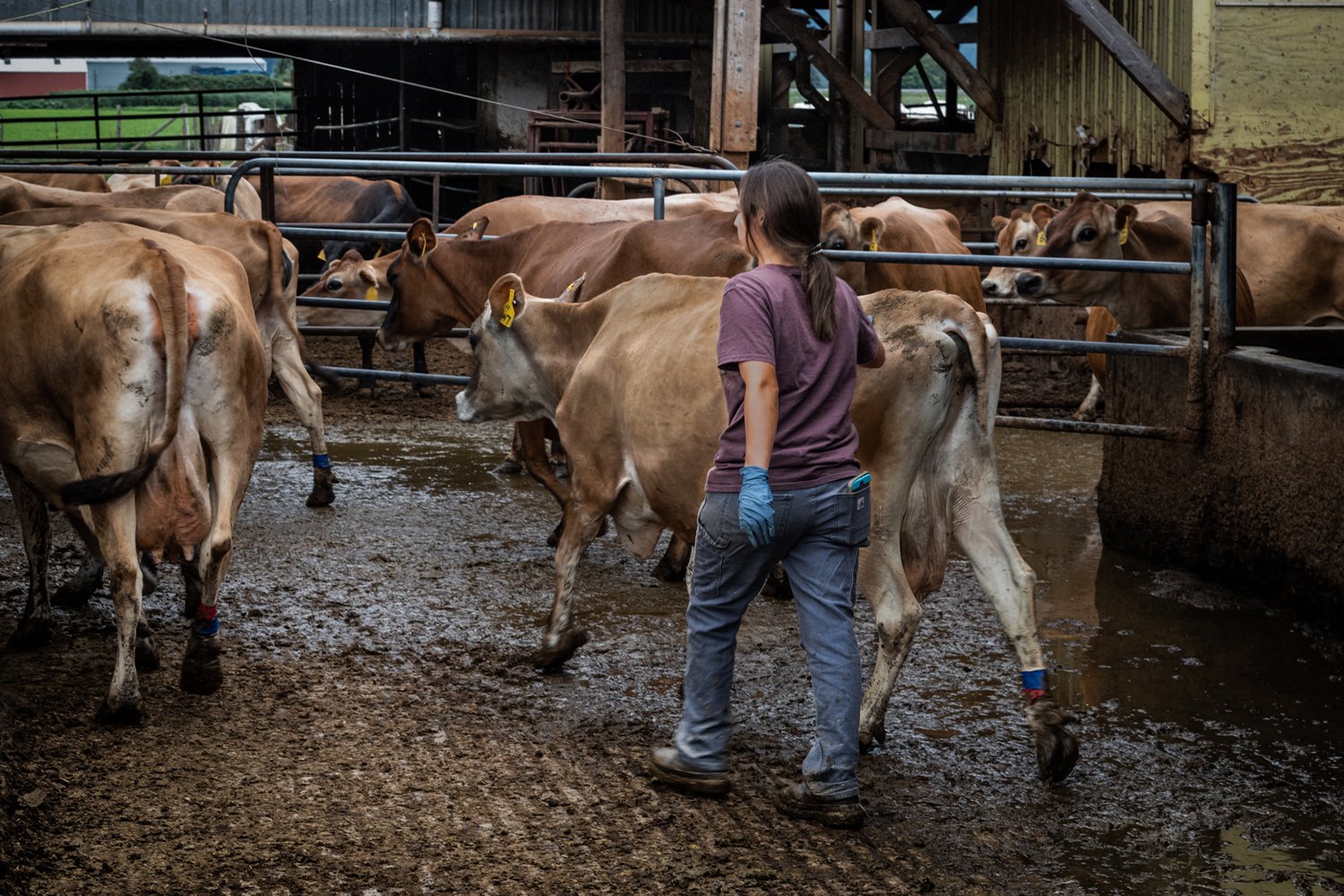
Back and forth from the milking barn. Back and forth to clean pens and bedding. Musical cows.
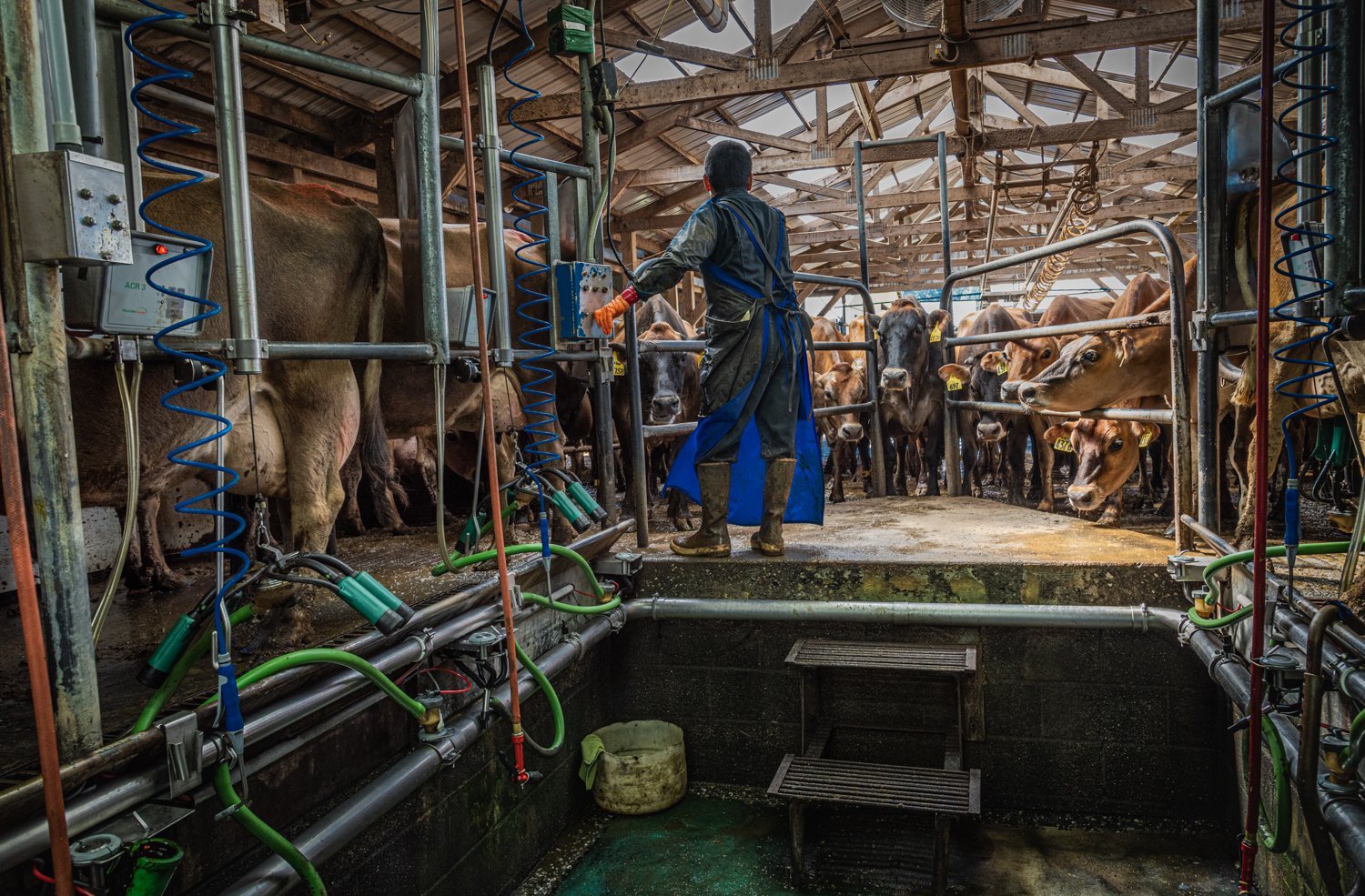
These cows are milked twice each day. This milkman works 11 hours per shift, 4 days on, 3 days off.

Think of this as a farmer's garden hose which just happens to be 1400 feet long and rolls itself up.
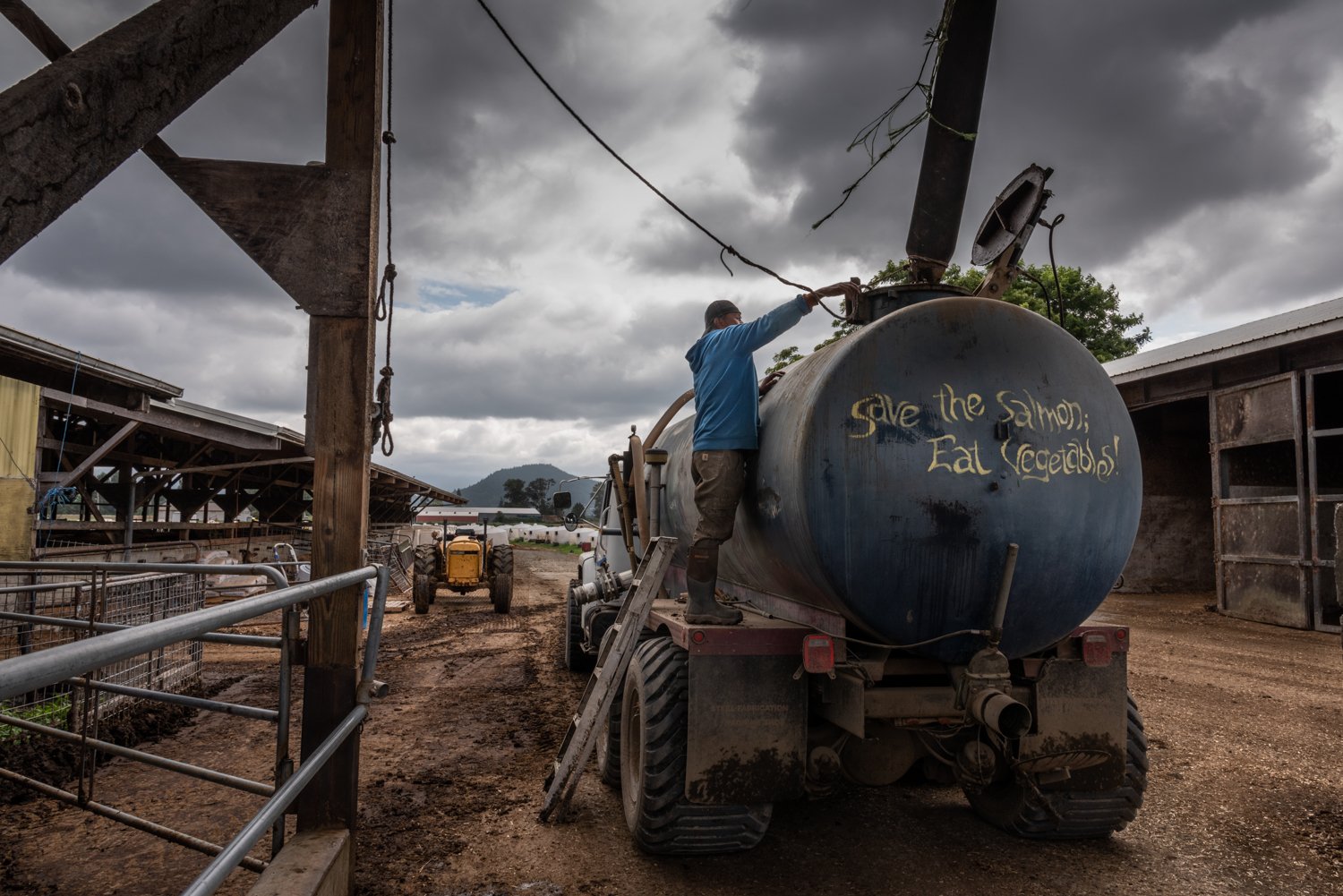
This dairy farm uses its manure to fertilize its hay field and sells its surplus to other farmers nearby. Once again, nothing goes to waste.
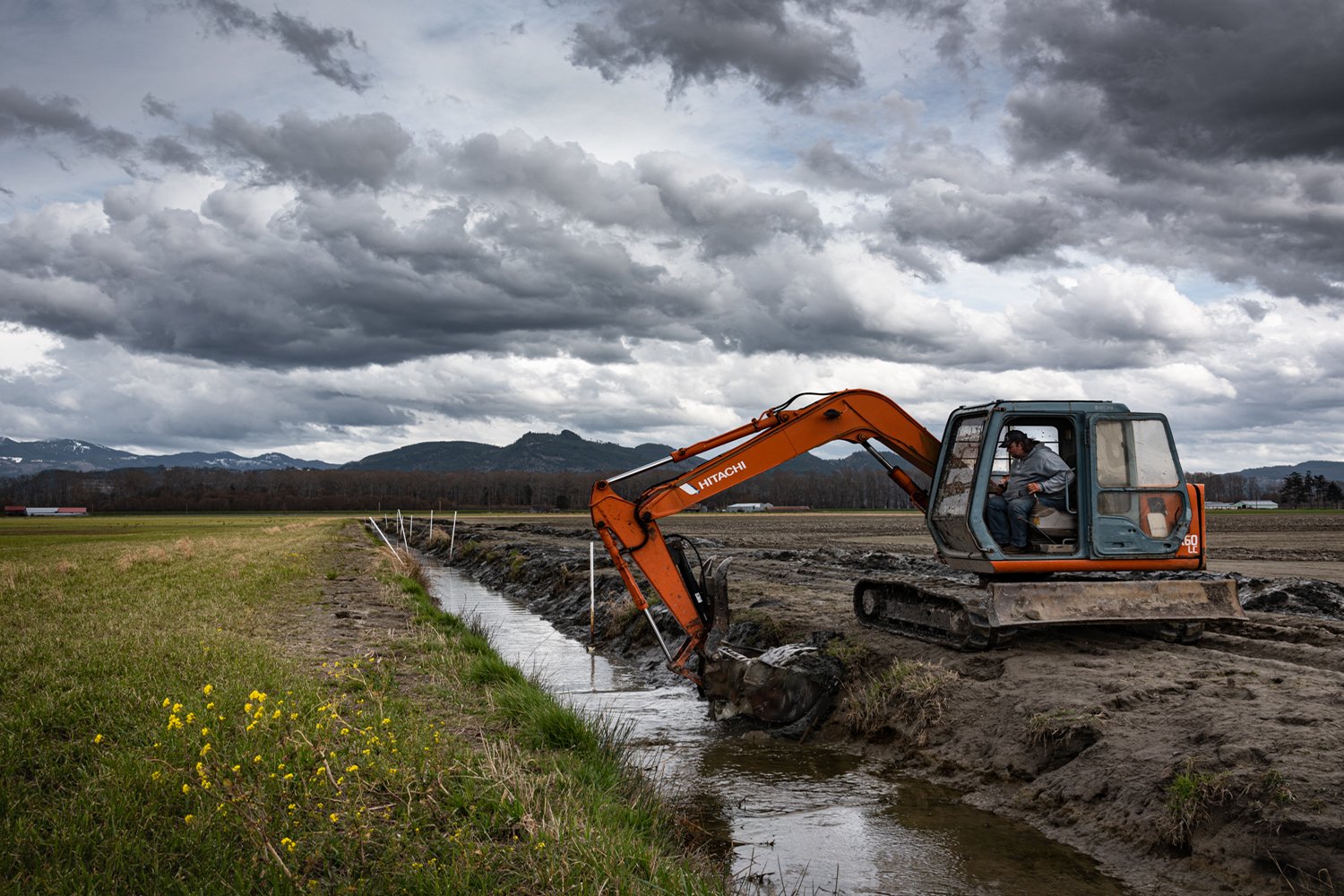
Without maintenance ditches become overgrown with weeds and grass, impeding drainage. Farming in a river delta demands constant attention.
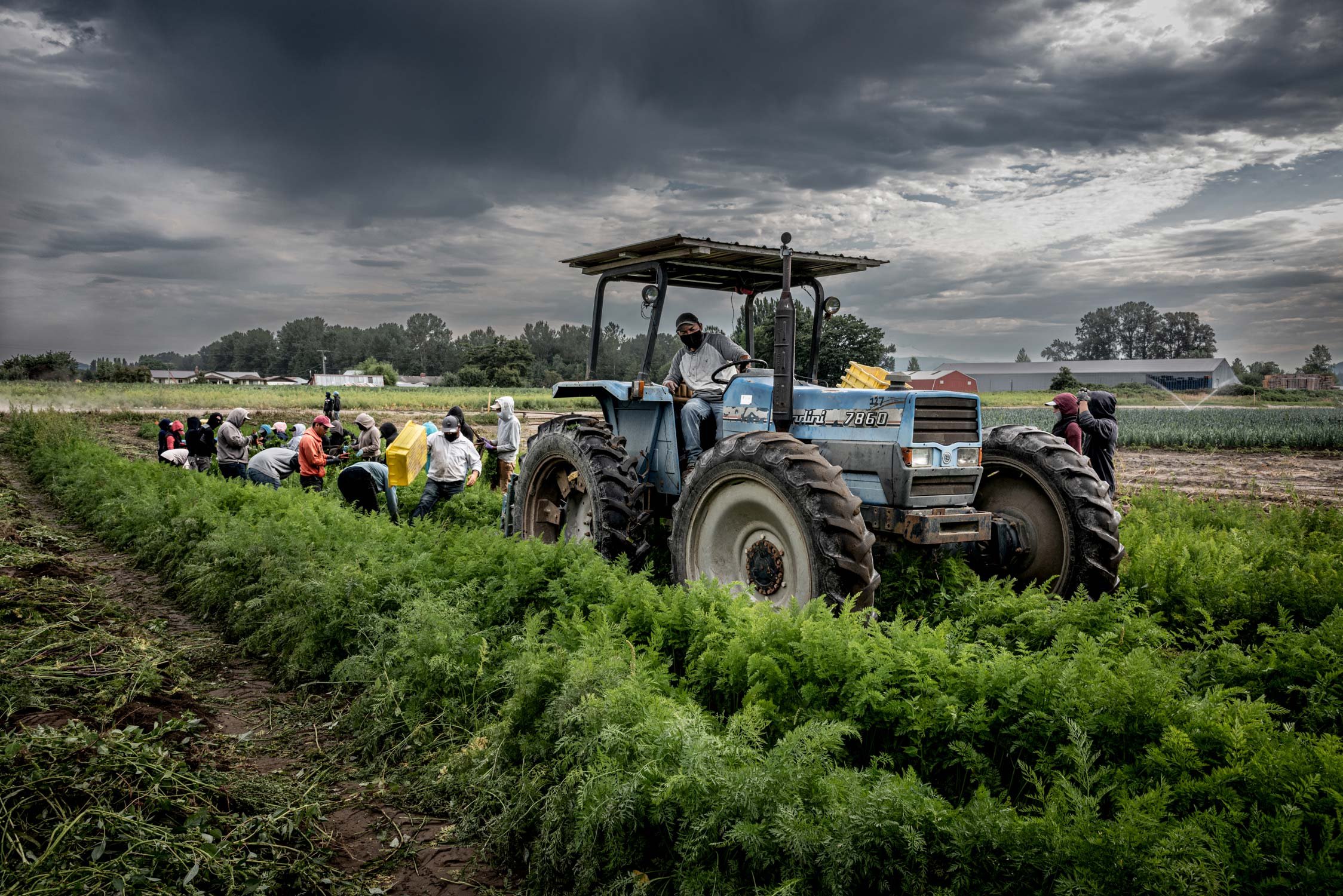
This tractor has metal “fingers” that loosens the soil, making it easier to harvest whatever root crop is being hand-picked.
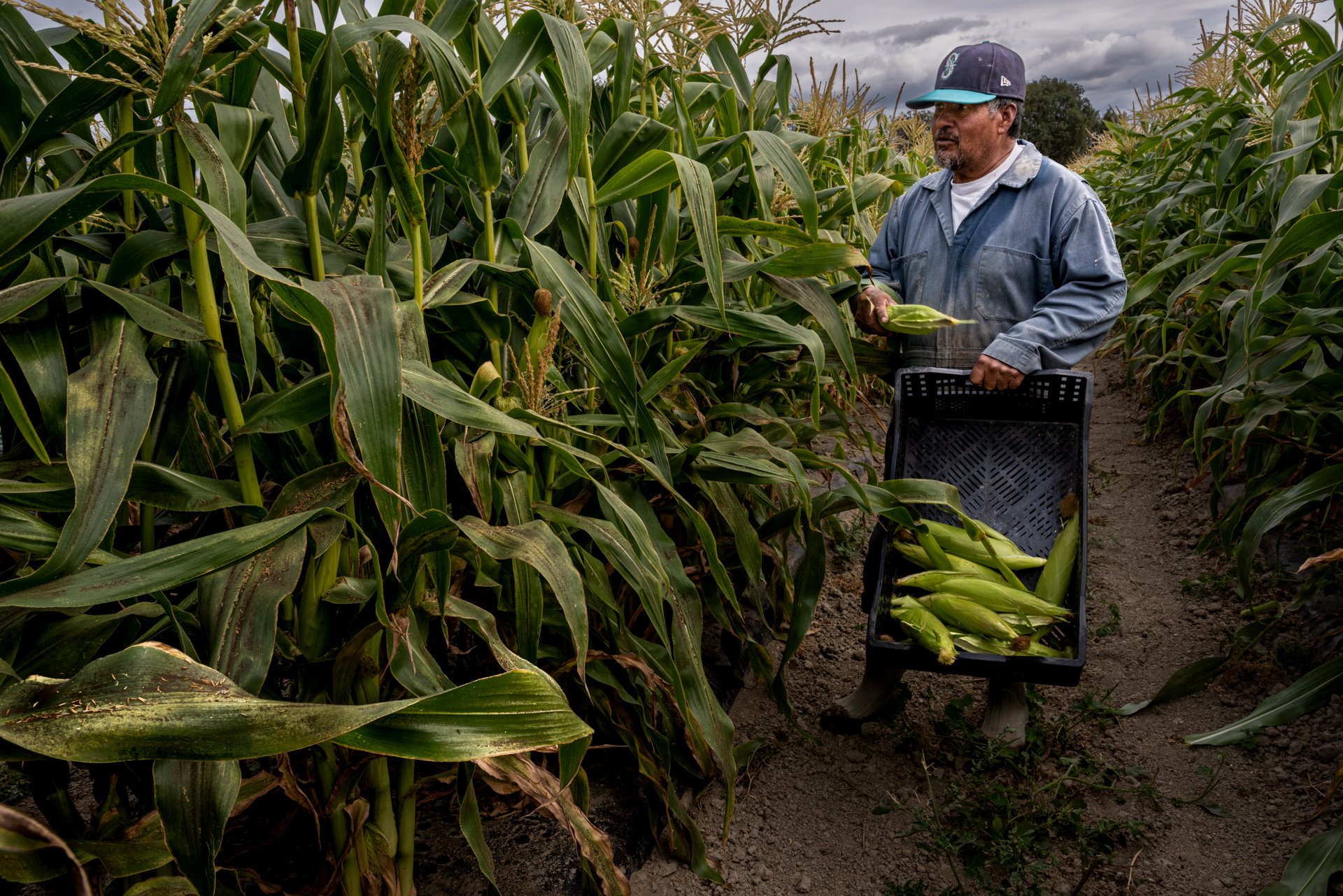
Sweet corn, summer at its peak. This crop will find its way to the local green grocery and farmstand out front. Picked daily and fresh. Organic.
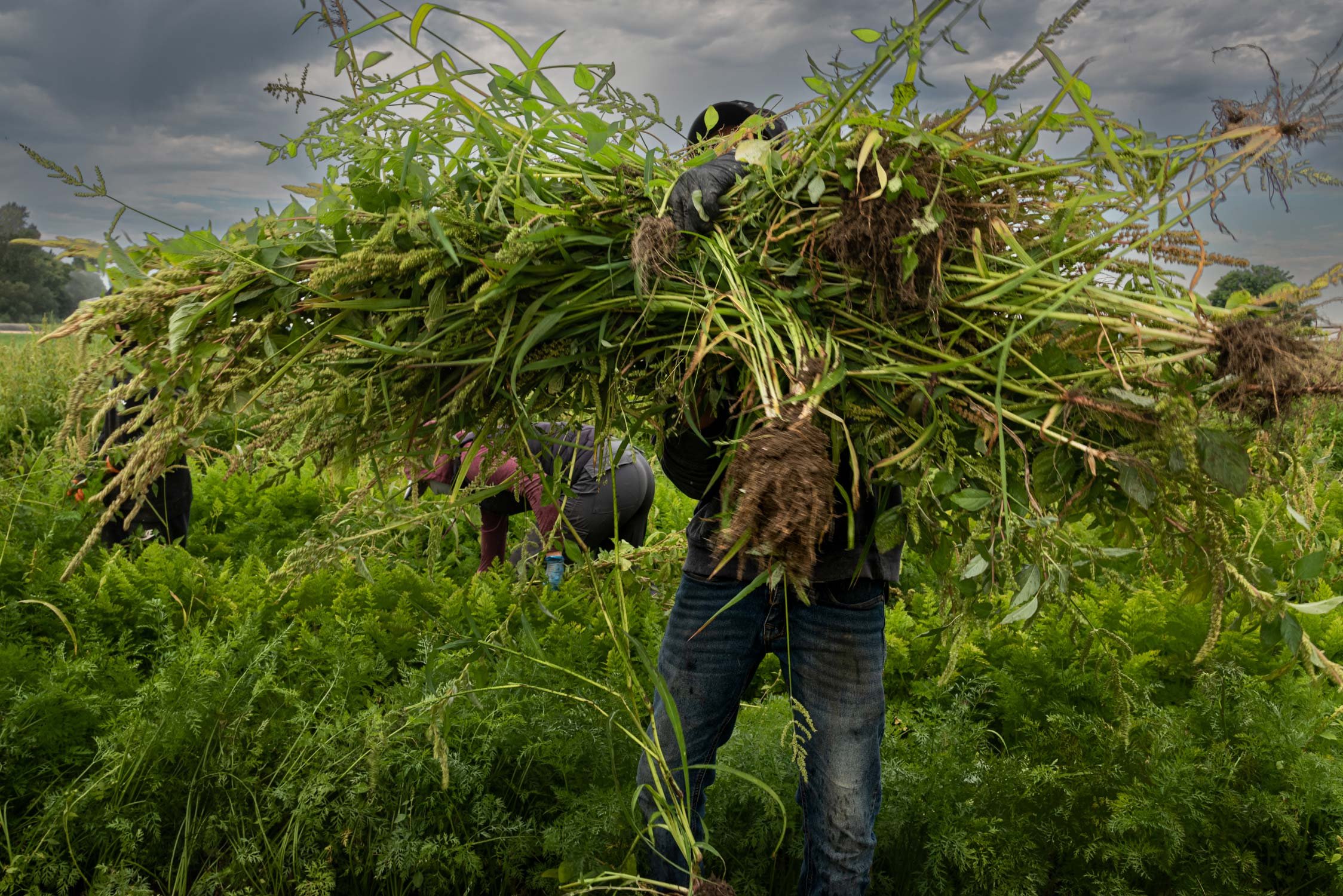
Organic farming demands weeds be pulled by hand. Herbicides are forbidden.
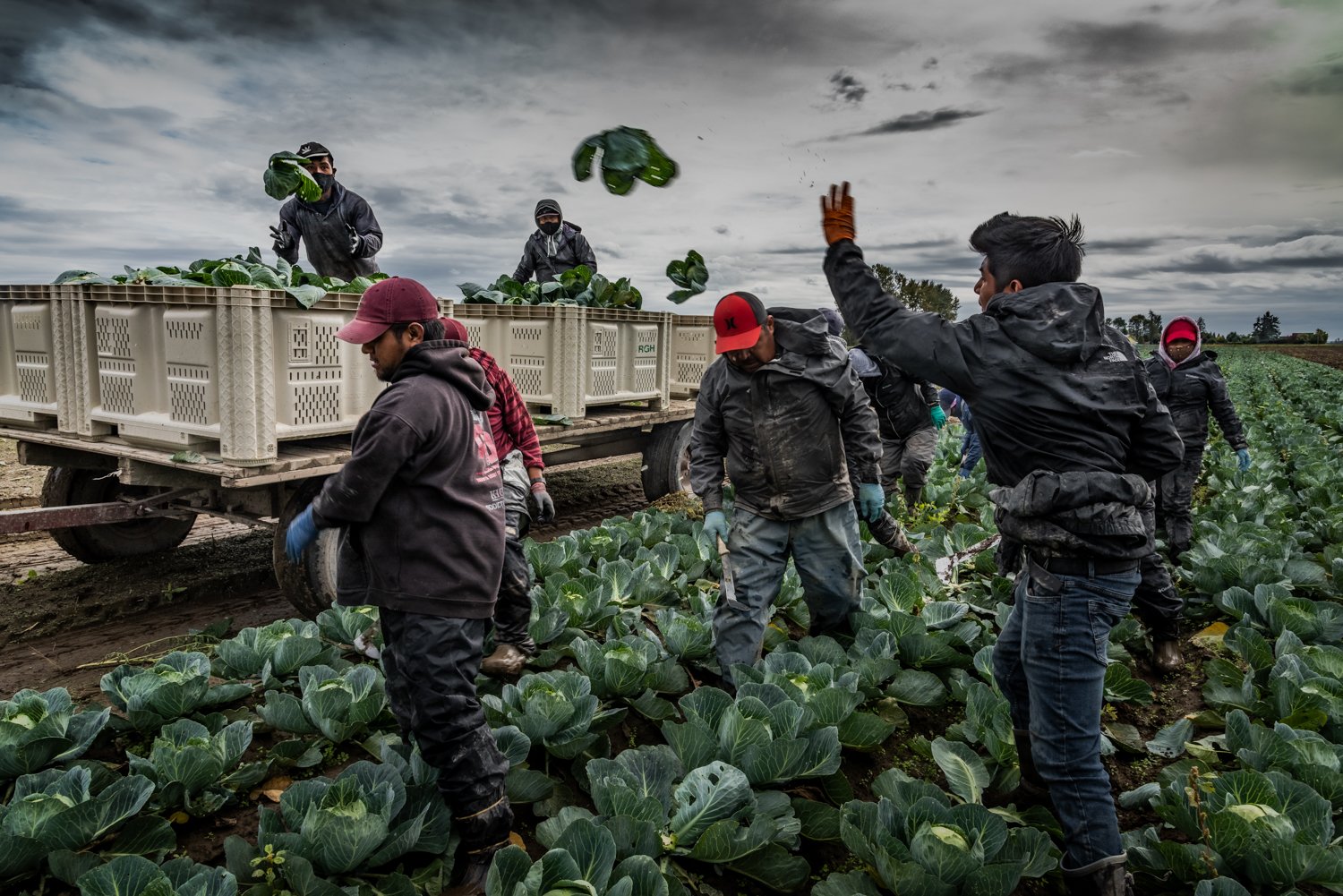
Harvesting cabbage: bend over, cut, stand up and toss. Bend over, cut, stand up and toss. These heads will be trimmed, washed and sent to market.
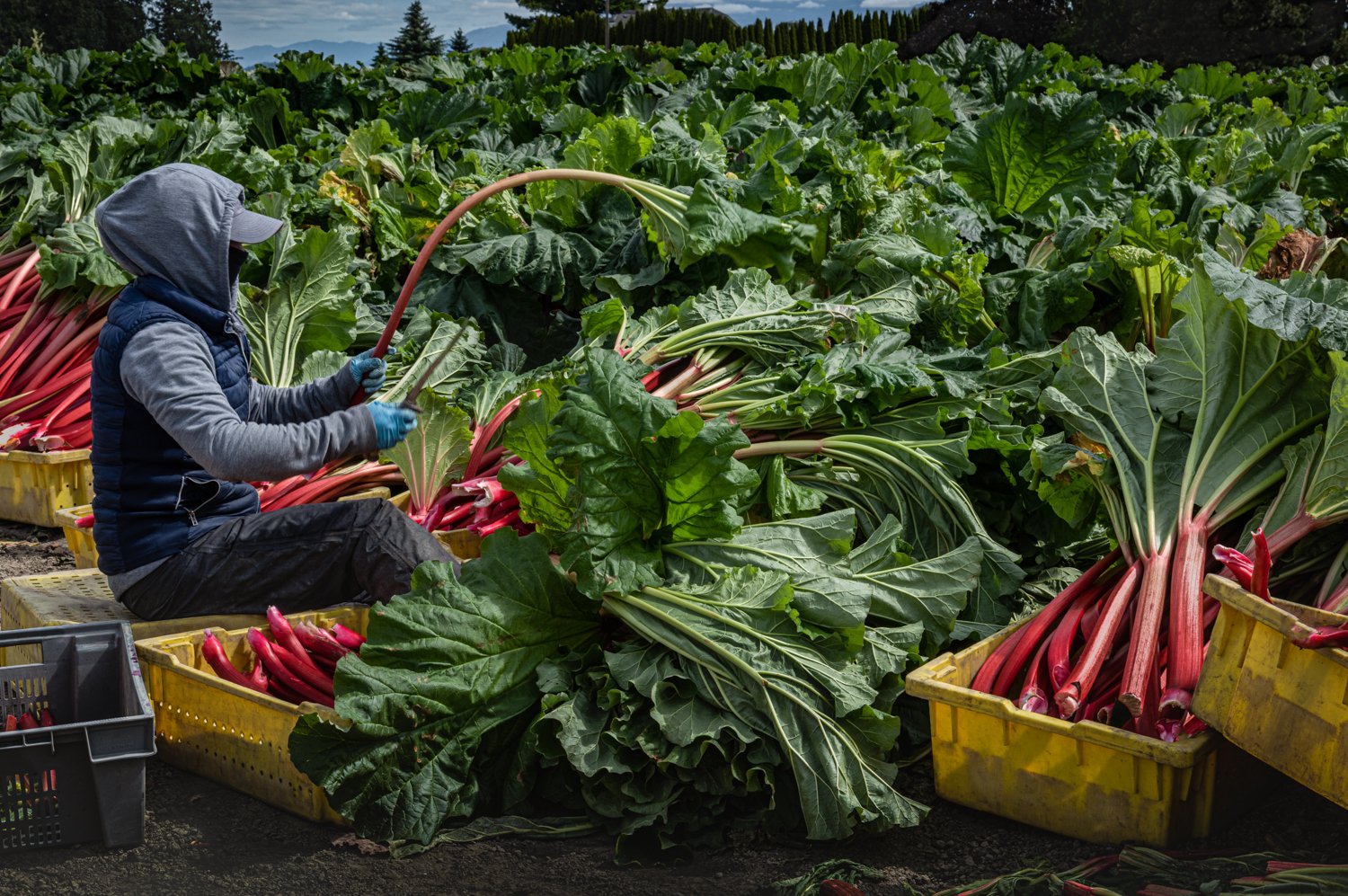
As rhubarb is harvested its leaves are trimmed off as they are inedible and toxic. They are good for composting though. Nothing goes to waste.
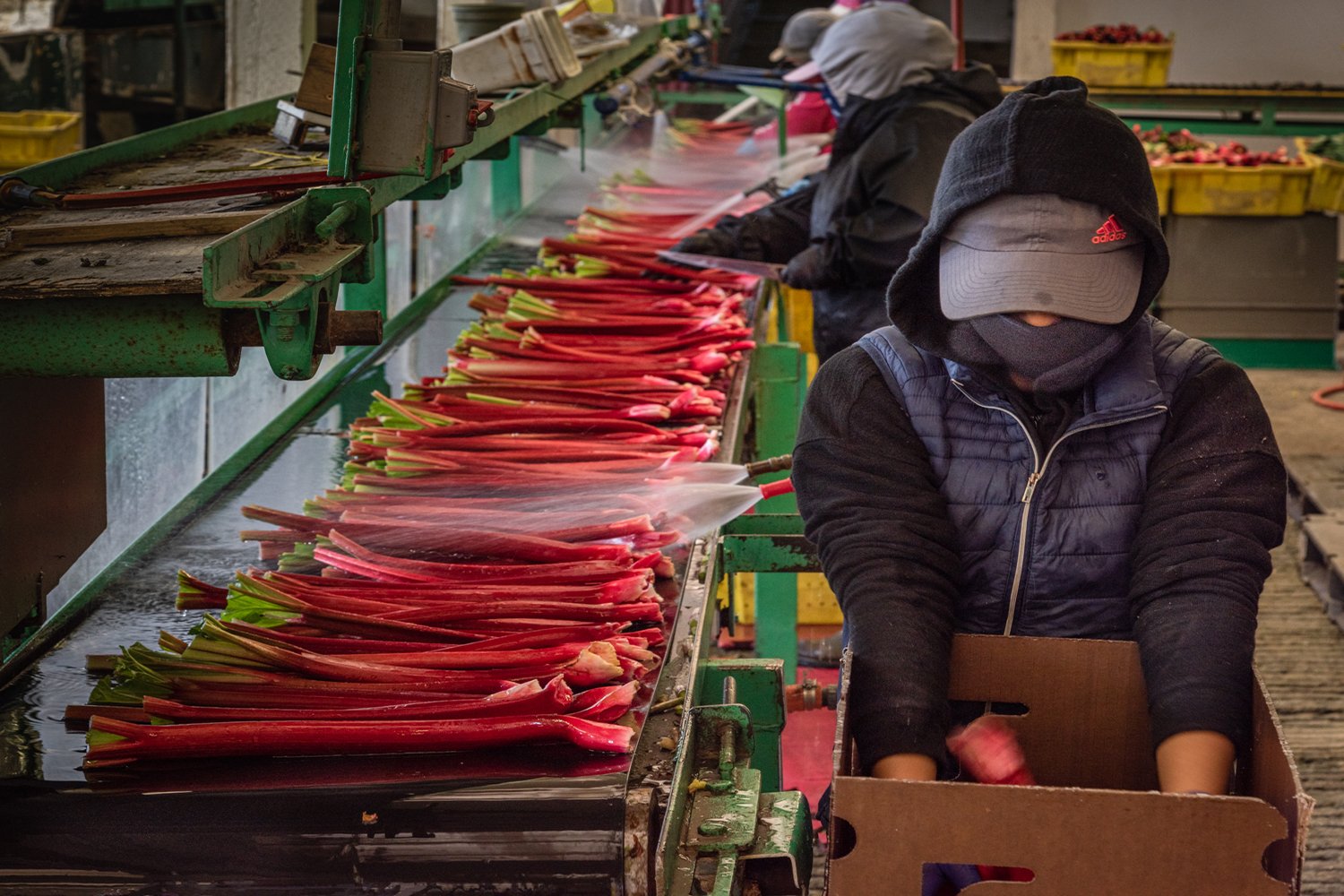
Once the cut Rhubarb is transported to the packing barn, it is washed, inspected, and carefully boxed up to be shipped to market straight away.
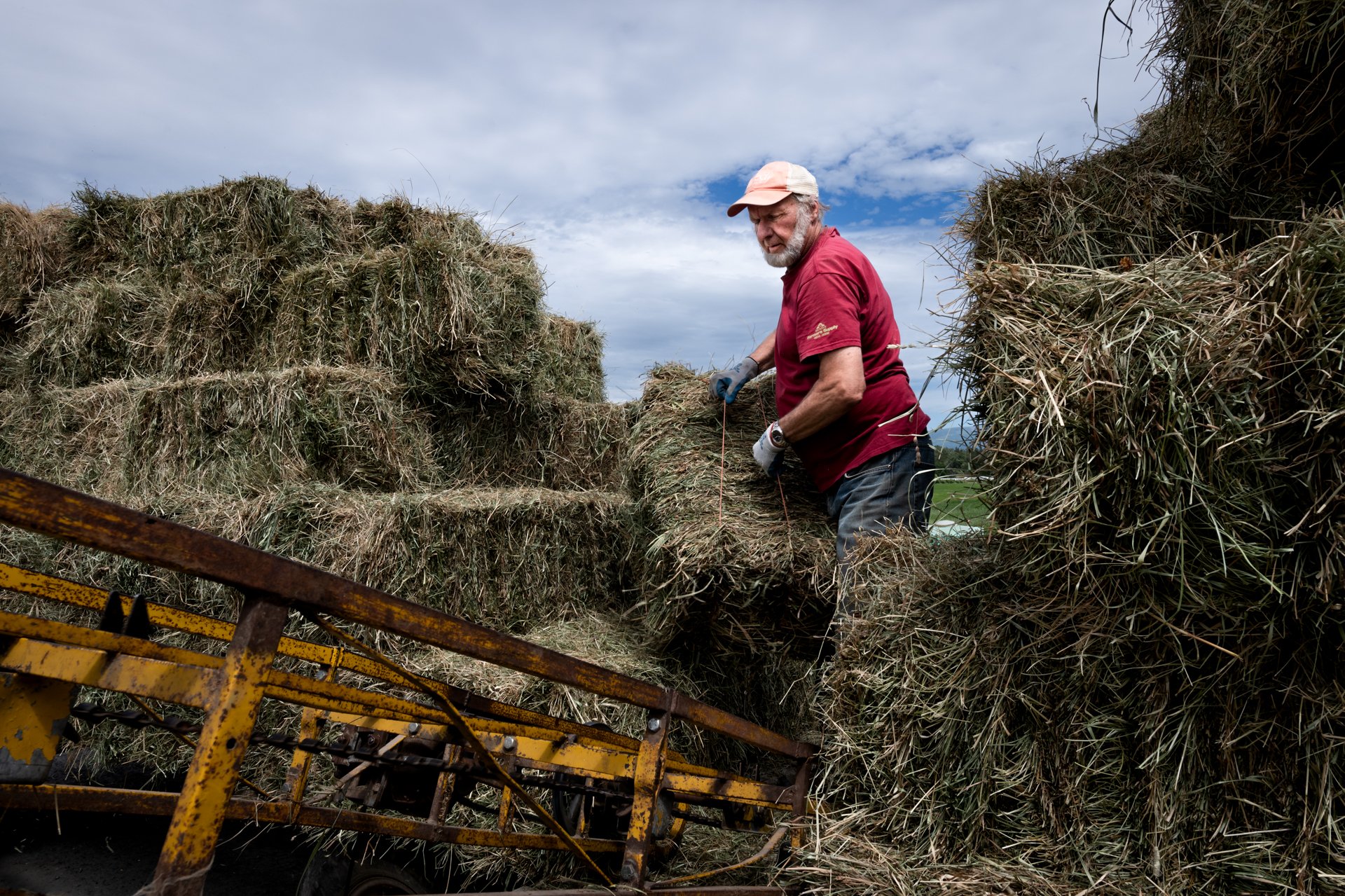

A summer ritual for many teenage boys - stacking hay bales in the loft. Hot, sweaty, dusty, heavy, satisfying work.
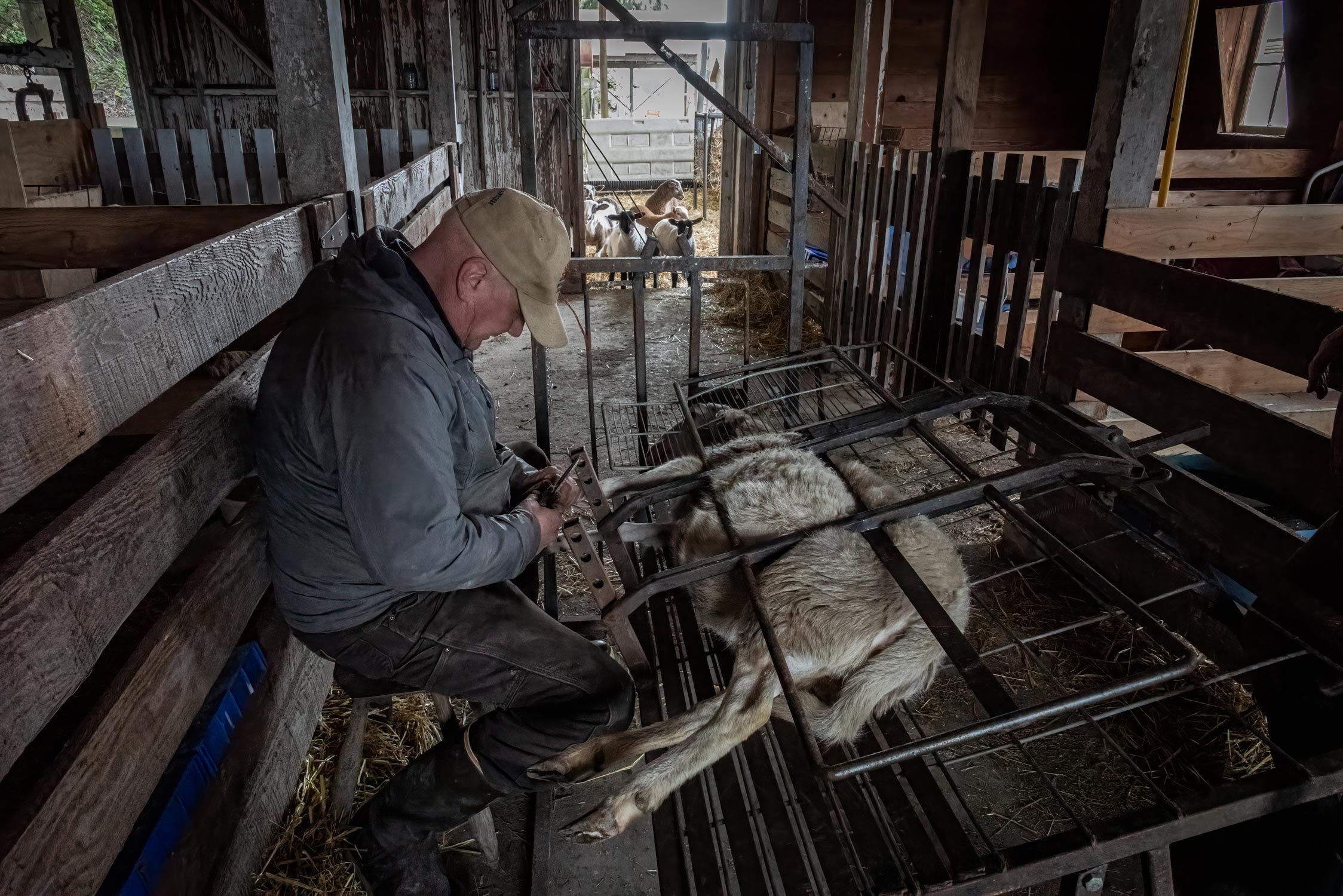
Sheep need their hooves trimmed on a regular basis. It prevents disease and improves the welfare of the sheep/goats. Overgrown hooves make walking painful and susceptible to joint and tendon problems and arthritis.
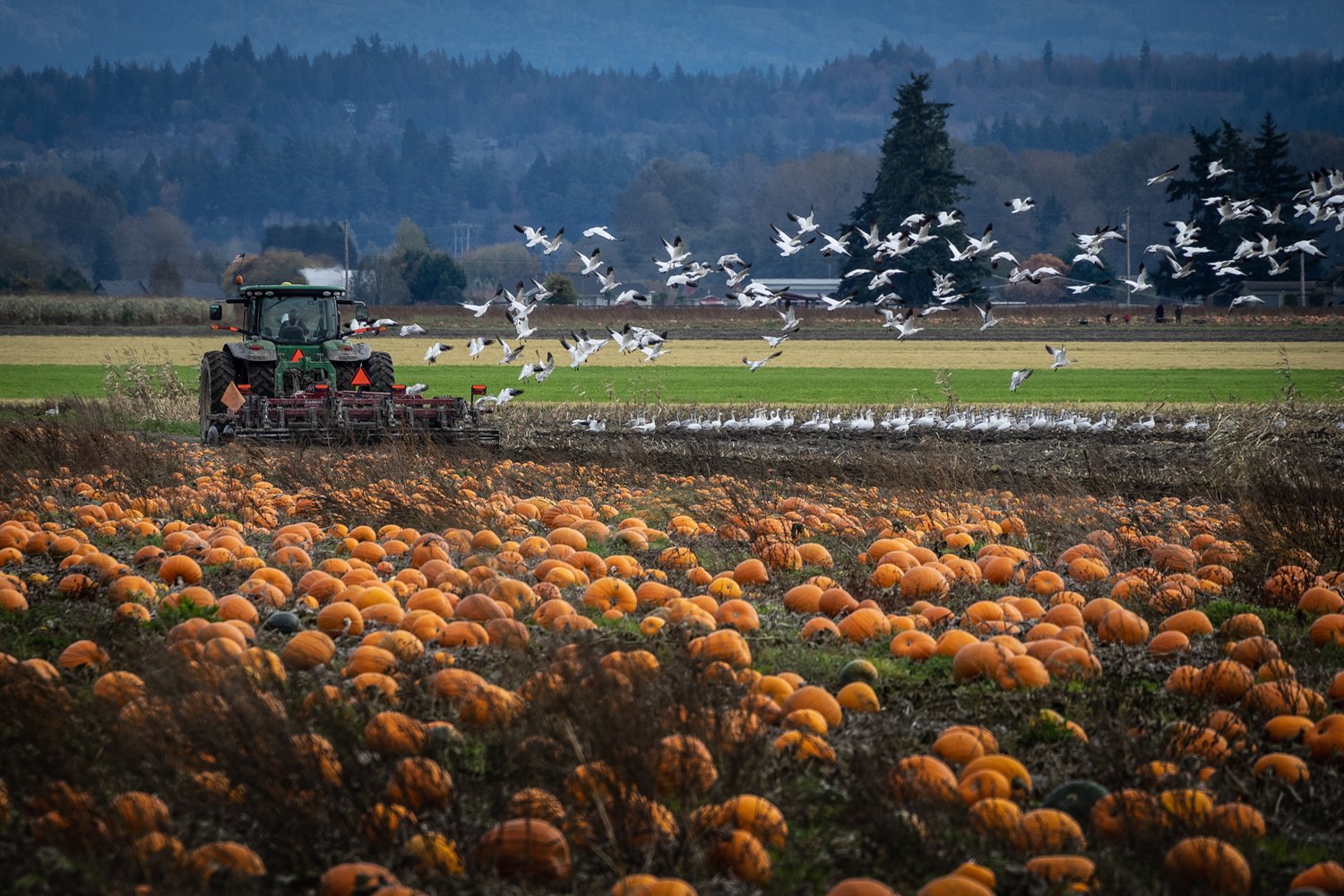
The Pacific NW and Skagit Valley are on the flyway for a vast array of birds including Snow Geese. Starting in mid-October upwards of 50,000 Snow Geese call the valley home. They return to their Arctic nesting grounds in late March.
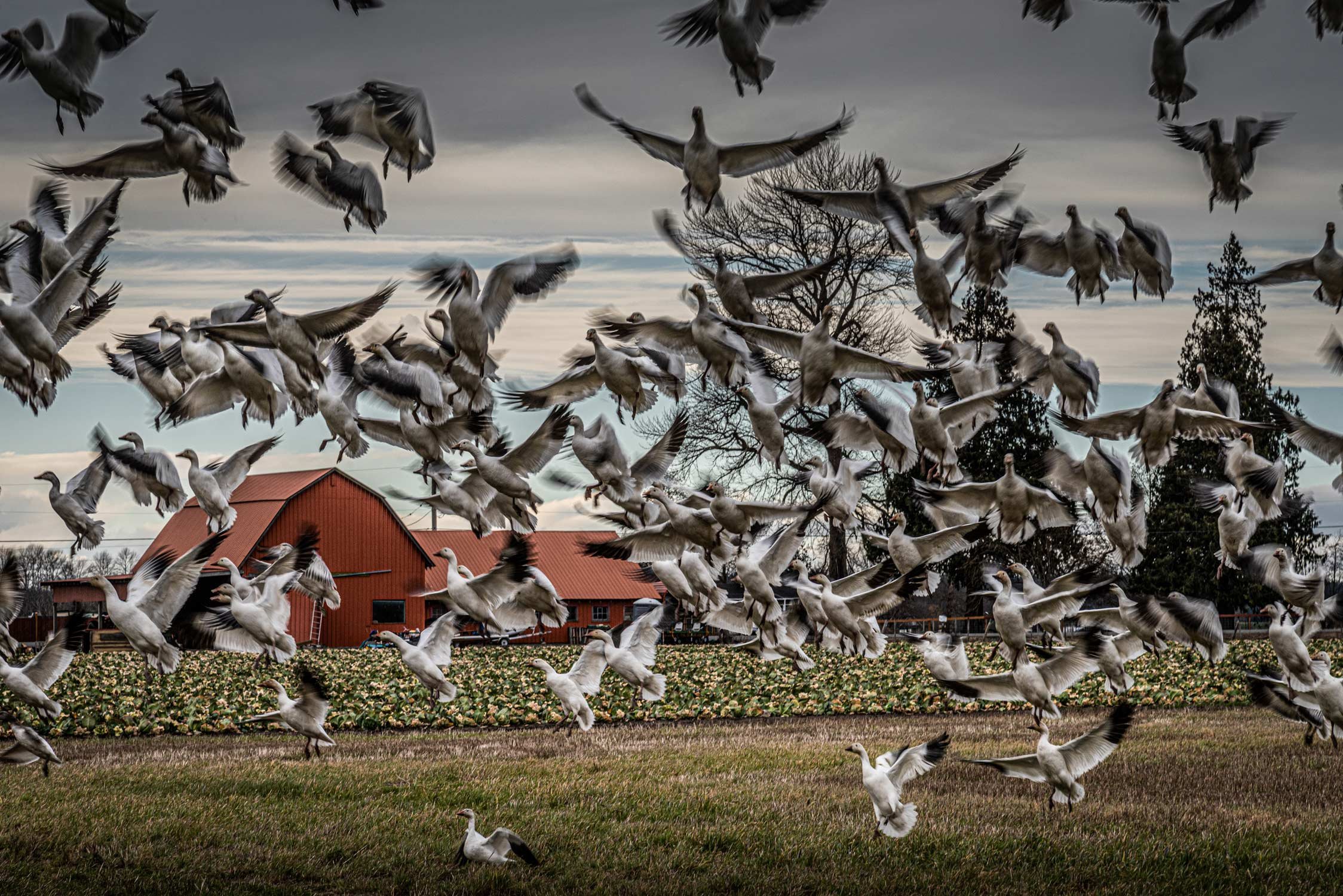
Starting in mid-October over 60,000 geese call the valley home. A delight for bird
watchers but a nuisance for farmers. Thousands of geese foraging in the fields deplete the
grass, compact the soil (requiring more plowing) and deposit enormous amounts of bird
droppings. Snow Geese poop 2-3 pounds, per day, per goose, which contaminates groundwater.
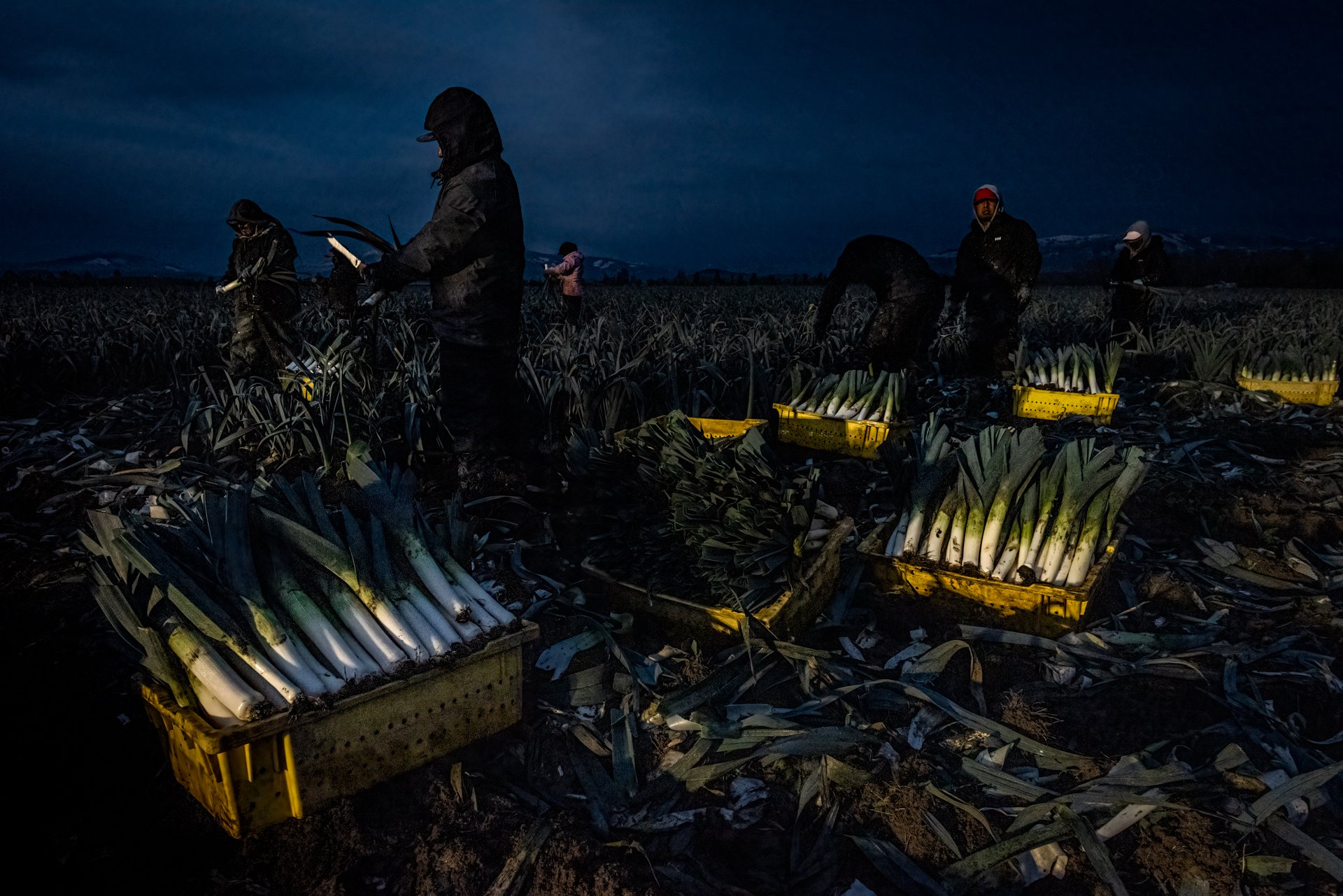
When you have orders to fill in the winter, some of it will be under spotlights. It is cold, hard work on muddy fields with uneven footing and a sense of isolation.